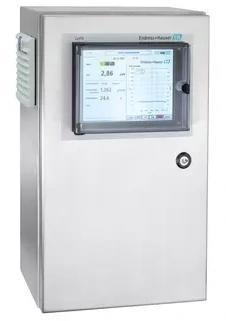Water purity holds significant importance across various industries, including in the life sciences, power and energy, and semiconductor sectors.

Image Credit: Shutterstock.com/Peter Bocklandt
In the production and utilization of ultrapure water, the measurement of total organic carbon (TOC) content serves as a crucial quality parameter. Elevated levels of TOC can negatively impact the efficiency of water purification systems and even lead to contamination of pharmaceutical batches.
To guarantee precise and consistent pH measurements in ultrapure water within power plants, experts from Endress+Hauser have provided some detailed guidelines.
What is TOC, and Why is it Important?
Total Organic Carbon (TOC) denotes the quantity of organic carbon existing in pure water and aqueous systems. The measurement of TOC involves the oxidation of all organic compounds present into a measurable form using an analyzer.
Analyzers like the low-range TOC CA78 and CA79 employ UV digestion and differential conductivity to quantify TOC. This well-established technique is commonly used for trace analysis of TOC.
TOC serves as a crucial indicator of ultrapure water quality. Therefore, the utilization of highly accurate TOC analyzers is essential for managing ultrapure water.
Ultrapure water is almost or totally free from contaminants. UV radiation is utilized to eliminate bacteria, reducing organic carbon and other impurities to below 50 ppb.
Elevated TOC concentrations can harm water purification systems, contaminate pharmaceutical batches, or compromise the necessary water quality in various processes.
Thus, the assurance of ultrapure water quality is vital for laboratories in diverse industries, including oil and gas, power and energy, and life sciences.
Total Organic Carbon Analyzers Provide High-Quality Ultrapure Water
The USP (United States Pharmacopeia) states that a TOC (Total Organic Carbon) limit of 500 ppb is essential for WFI (Water for Injection). Similarly, ultrapure water must have less than 5.0 ppb TOC content.
To maintain low TOC levels, continuous monitoring, and adjustment are crucial. The CA78 and CA79 analyzers ensure accurate and continuous TOC online monitoring, guaranteeing the consistently high-quality of ultrapure water used in production processes and compliance with USP requirements.
With a rapid response time (t90) of 50 seconds, these analyzers enable users to react quickly to changes in the process conditions and protect their product effectively, saving the plant both time and resources.
- The CA78 analyzer is specifically designed for precise online TOC monitoring in power plants and semiconductor production.
- The CA79 analyzer is tailored for the life sciences and pharmaceutical industries. Additionally, the CA79 analyzer provides comprehensive documentation of relevant events, regular quality reports, and system suitability tests, providing peace of mind regarding the device's accuracy.

Low-range TOC analyzer CA79. Image Credit: Endress+Hauser

Low-range TOC CA78 analyzer open. Image Credit: Endress+Hauser
Both analyzers feature a maintenance-friendly design and are backed by Endress+Hauser's worldwide service network, ensuring complete support for the measuring point from commissioning throughout the device's entire lifecycle.

This information has been sourced, reviewed and adapted from materials provided by Endress+Hauser Ltd.
For more information on this source, please visit Endress+Hauser Ltd.